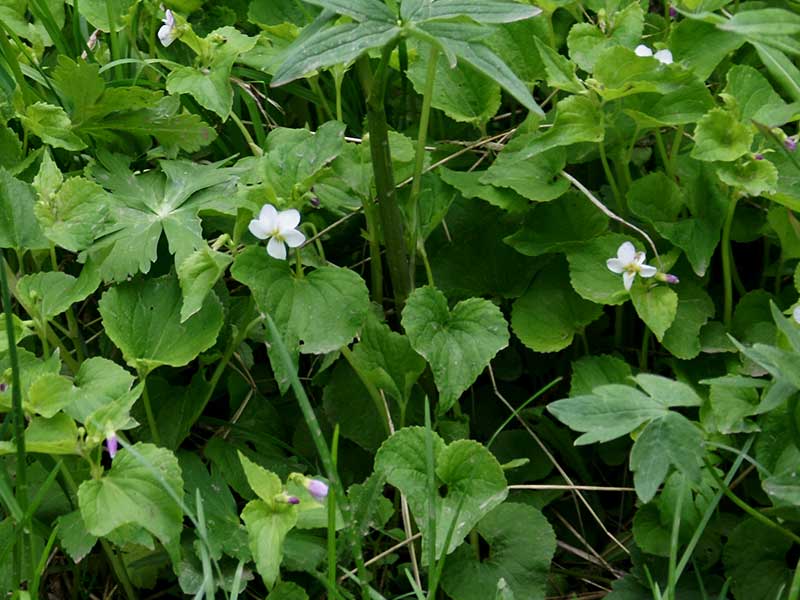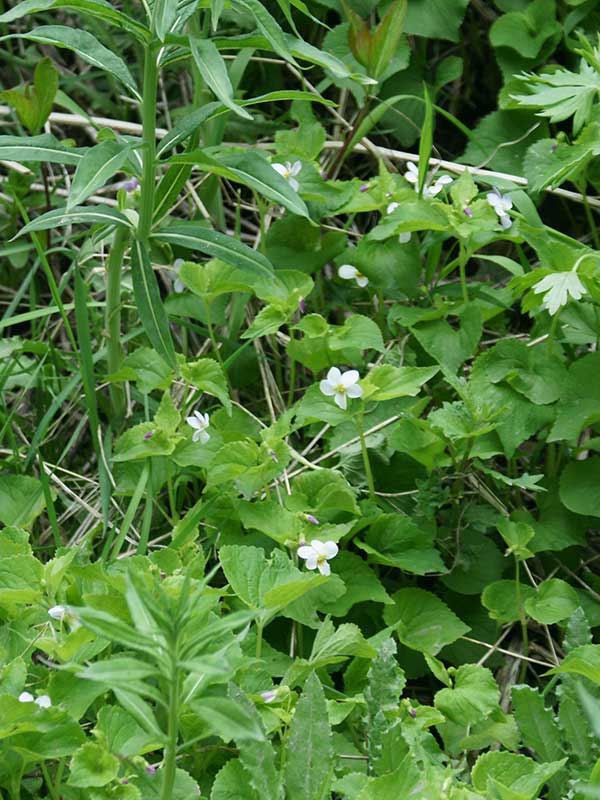Viola canadensis / white violet
- heart-shaped (like Valentines) leaves, 3-ish inches long
- sharp leaf tips; rounded teeth
- white flowers (1 inch) with yellow centers, petals purple-tinged on back side
- understory, but may also be exposed
- blooms in early spring
Also known as: Canadian white violet, tall white violet, Canada violet
There are four species of violet in the Valley (that I know of). Two are yellow and one is blue. V. canadensis is the only white one. It has 5 slightly irregular white petals with yellow bases, sometimes with streaks of purple. If you look closely, you may see that the side petals are “bearded”, with tufts of short hairs. The back sides of the petals are purple tinged. Individual flowers are about 1 inch across.
The flowers are borne singly on naked stocks arising in leaf axils. This is a bit hard to see in the case of basal leaves, but there are stem leaves as well in which case it is easier. The pedicels hold the flowers just slightly above the leaves.
The leaves are heart-shaped, in the Valentines day sense, with coarse, rounded teeth and pointy tips. They are 2 to 4 inches long and up to 3 inches wide. It seems to me that violet leaves are always recognizable, at least if you have seen violets before, even if each species has a distinctly different shape. The leaf shape in this case is definitely diagnostic.
The fruit of the white violet is similar to those of other Viola species, being an oval capsule up to half an inch long and covered in short fine hairs. As it ripens the capsule changes from green and pendant to brown and erect. It splits into three sections to disperse the seeds.
White violets often grow in clumps or colonies, even when mixed in with other vegetation. The colonies are formed by plants spreading by rhizomes or sometimes, stolons. They are often found in woodlands or open meadows after snowmelt in the spring.
| Color | |
|---|---|
| Family | |
| Blossom size | |
| Inflorescence size | |
| Inflorescence type | |
| When? | |
| Where? |

